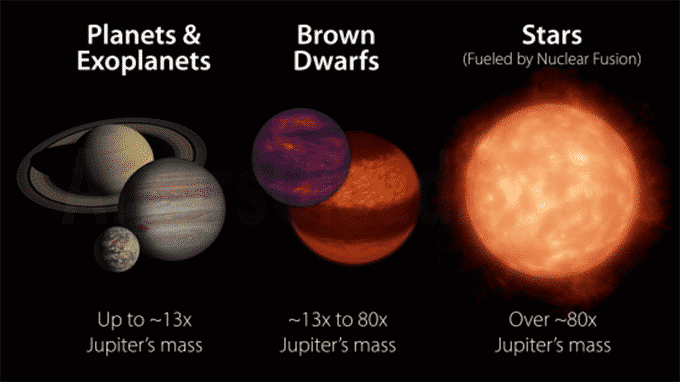On 6th May 2020, A team of astronomers at the Space Telescope Science Institute (STScI) discovered that the Luhman 16A, closest known brown dwarf showing signs of cloud bands similar to the Jupiter and Saturn using the technique of polarimetry to determine the properties of atmospheric clouds outside the solar system or typically. Key Points:
Key Points:
i.Brown Dwarfs and objects heavier than the planets and have 13 to 80 times the mass of Jupiter.
ii.Luhman 16A is a part of a binary system containing a second brown dwarf, Luhman 16B both having similar mass and temperature. It is presumed that both are formed at the same time and show different weather like the Earth and Venus which are twin with different weather.
iii.Unlike Luhman 16A, Luhman 16B has noticeable brightness variations as a result of the irregular, patchy clouds.
iv.The Polarimetry technique can be applied to exoplanets orbiting distant dwarfs and measuring the polarisation signal from exoplanets is more challenging due to relative faintness and proximity.
v.James Webb Space Telescope, an upcoming NASA project will enable the study system like Luhman 16 and observe the signs of brightness variations in infrared light that are indicative of cloud features.
vi.NASA’s Wide-Field Infrared Survey Telescope(WFIRST) equipped with a chronograph instrument which can conduct polarimetry and detect giant exoplanets in the reflected light and the signs of clouds in their atmosphere.
vii.The Astrophysical Journal has accepted this study.
The Space Telescope Science Institute(STScI) expanded its frontiers of space astronomy by hosting the science operation centre of the Hubble Space Telescope, the science and operations centre for the WFIRST.
viii.Mikulski Archive for Space Telescopes (MAST) is a NASA funded project housed in STScI supports and provides a variety of data archives and repositories for the Hubble, Webb, Kepler, K2, TESS missions and others to the astronomical community.
About NASA:
Administrator– James Frederick Bridenstine or ‘Jim’ Bridenstine
Deputy Administrator– James W. Morhard
Headquarters– Washington DC, United States




